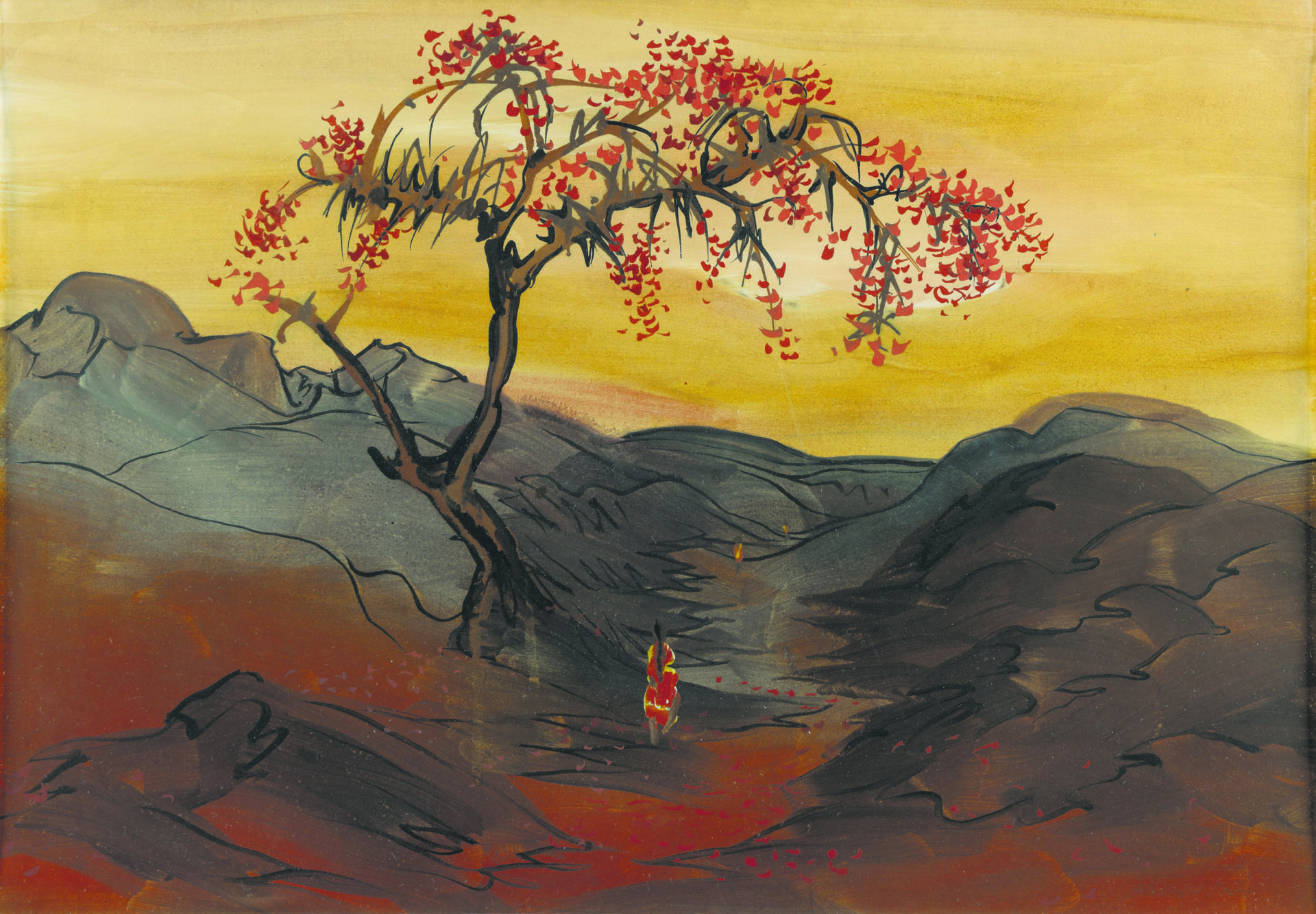In order to truly appreciate one’s cultural heritage, one must explore the history associated with it. An institution that shines a light on India’s fascinating historical legacy – by presenting archival art and ephemera painstakingly collected over decades from around India and the world – is DAG. Its latest two exhibits at its Delhi showroom, on view till January 25, at first seem completely at odds with one other. Yet, on closer inspection they represent two important ends of a timeline – the moment the British asserted sovereignty over India and the moment its newly-independent citizens felt the exuberance of living in a free nation nearly two centuries later. Hence, the two exhibits should be visited and viewed together in this context.
The first of these is “William Hodges & the Prospect of India”. This is the first time that his full set of 48 aquatints made as part of the series “Select Views in India” are on view. The second exhibit is “Flower of Fire: The Life & Art of Gopal Ghose”, which is a retrospective of the work of Bengali artist Gopal Ghose covering his creative evolution and artistic trajectory from the 1930s to his final days.
At their heart, they both provide differing visions of Indian landscape art – William Hodges does it in the 18th century while Gopal Ghose does it in the 20th. “Looked at closer, both artists are seen to express the passion and intensity of their respective introspective minds that bridge the divide between their radically different practices,” explains Giles Tillotson, Senior VP, Exhibitions at DAG, who has curated the show.
Tillotson highlights that Hodges’ exhibit traces his itinerary of travels by connecting his aquatints with the various sites he visited. “It’s the fullest study of one of the most remarkable artistic achievements of colonial India. The geographically arranged plates take the viewers back two and a half centuries to rediscover lost monuments and forgotten landscapes,” he says. They start in the west from the colonial settlements of the Hooghly, going through Murshidabad and Rajmahal, followed by Benares and Allahabad, and end at Agra and Gwalior, while pausing at several less well-known places along the route.
William Hodges was the first British artist to travel to India. He reached its shores in 1780 with the mandate of presenting India to a visually ignorant audience in Europe. Upon arrival, he was patronised by Warren Hastings, Britain’s first Governor General in India and began to travel with him. He published a series of prints based on the sketches he had made on the spot after he returned home to England after three years. The idea was to disseminate his work as widely as possible. The forty-eight aquatints of his “Select Views in India” were issued in 1785-88 and gave the European audience their first real glimpse of Indian architecture and landscape. In his prints, Hodges includes temples and holy cities, ancient and modern forts, mosques, tombs and caravanserais, and even utilitarian structures such as bridges. Their locations range from the hills of Bihar to the rivers of modern-day Uttar Pradesh.
“Two previous exhibitions on landscape art, Indian Landscapes and New Found Lands featured works by William Hodges and Gopal Ghose, but with “William Hodges & the Prospect of India” and “Flower of Fire: The Life & Art of Gopal Ghose” serving as a retrospective on the artist, we have the occasion to study two entirely different styles of landscape painting. Not only are they separated by two centuries of art practice, their works represent two ends, as it were, of the genre of landscape art. If Hodges’ were the first independent views of India, Ghose’s paintings are excellent examples of the impact of modernism on Indian art. Between them, they serve up history and allow us to exult in how art is continuously being influenced and re-shaped by the times in which it is created,” says Ashish Anand, CEO and MD at DAG.
Ghose’s exhibit consists of DAG’s unrivalled private holdings of the artist’s works including paintings, sketches and notebooks, and draws on fresh archival research to display his socially relevant creations from the 1940s. They lay emphasis on line, and culminate in his masterful landscapes that amply warrant his reputation as an exemplary landscapist and colourist, while sharing a glimpse of his own life’s celebrations and struggles.
Ghose was a founder-member of the Calcutta Group, from which he soon dissociated himself. His artistic trajectory underwent several transitions which become visible through the masterful landscapes on display at this exhibit. There is a selection of his works in watercolour, gouache, pastels and an uncommon oil on canvas alongside rare early sketches in pencil from the time when Ghose took artistic training from Sailendranath Dey and D.P. Roychowdhury in Jaipur and Madras. Other archival objects include a copy of Jawaharlal Nehru’s “Discovery of India” signed by Nehru and dedicated to Ghose and letters addressed to him by Rabindranath and Abanindranath Tagore, amongst photographic material. For the first time the artist’s personal journals and sketchbooks, from the DAG archives, are on view offering new insights into his mind as well as the time he spent at mental rehabilitation centres.
The publication that accompanies the launch of this exhibit carries essays that delve deeper into Ghose’s reflections on education, relationships, socio-political themes, philosophical
The two exhibits must be seen at leisure to understand the idea of India as it occurred to the two artists in focus. It’s a stellar collection that is sure to appeal to people across ages, ethnicities and interests. Both exhibits are on display at DAG, New Delhi till January 25.
Noor Anand Chawla writes on lifestyle for various publications and her blog www.nooranandchawla.com.

